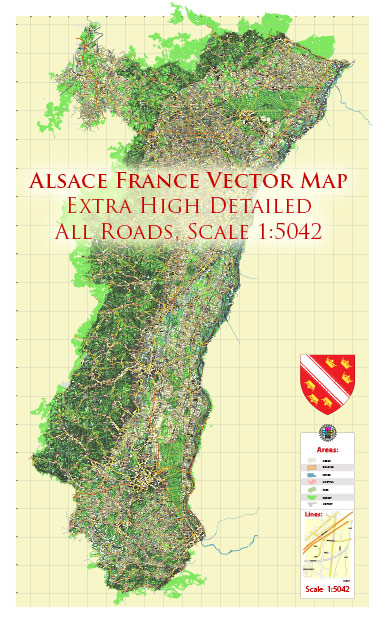Alsace, located in northeastern France, is known for its unique economic profile that combines elements of French and German influences due to its history of changing hands between the two countries. Here is an economical description of Alsace:
- Agriculture: Alsace has a strong tradition of agriculture, particularly in the wine and dairy sectors. The region is famous for its vineyards, producing high-quality wines like Riesling, Gewürztraminer, and Pinot Blanc. Additionally, dairy farming is prevalent, with an emphasis on cheese production, including Munster and Gruyère.
- Industry: Alsace has a well-developed industrial sector, with a focus on manufacturing and production. The region is known for its manufacturing of machinery, equipment, and chemicals. Strasbourg, the capital of Alsace, is home to a variety of industrial enterprises.
- Tourism: Tourism plays a significant role in the economy of Alsace. The region’s picturesque landscapes, charming villages, and historical sites, such as Strasbourg’s Old Town and the beautiful Alsace Wine Route, attract visitors from around the world. The Christmas markets in Strasbourg are particularly famous.
- Trade: Alsace benefits from its strategic location on the border with Germany, making it a hub for cross-border trade. The Rhine River plays a crucial role in transporting goods between the two countries.
- Higher Education and Research: Alsace is home to several universities and research institutions, such as the University of Strasbourg, which contributes to the knowledge-based economy. The research sector in fields like biotechnology and pharmaceuticals is growing.
- EU Institutions: Strasbourg hosts the European Parliament, which brings international diplomats and staff to the city, contributing to the local economy through various services.
- Small and Medium-sized Enterprises (SMEs): Alsace has a strong network of small and medium-sized enterprises, many of which are family-owned. These businesses are a driving force in the region’s economy and often specialize in niche markets.
- Cross-Border Cooperation: Given Alsace’s proximity to Germany, cross-border cooperation is vital. Many businesses have connections and partnerships across the border, enhancing economic ties with Germany.
- Transport and Logistics: Alsace’s transportation infrastructure is well-developed, with highways, railways, and the Port of Strasbourg connecting the region to national and international markets. This facilitates the movement of goods and contributes to the region’s economic development.
- Green and Sustainable Initiatives: There is an increasing focus on sustainability and green initiatives in Alsace, with efforts to promote eco-friendly practices in agriculture, industry, and tourism. This aligns with broader European and global trends toward environmental responsibility.
Overall, Alsace’s economy is diverse, benefiting from its geographical location, historical heritage, and a blend of French and German influences. It has a strong industrial and agricultural base, with a growing emphasis on tourism and sustainable practices, which all contribute to its economic vitality.


 Author: Kirill Shrayber, Ph.D.
Author: Kirill Shrayber, Ph.D.